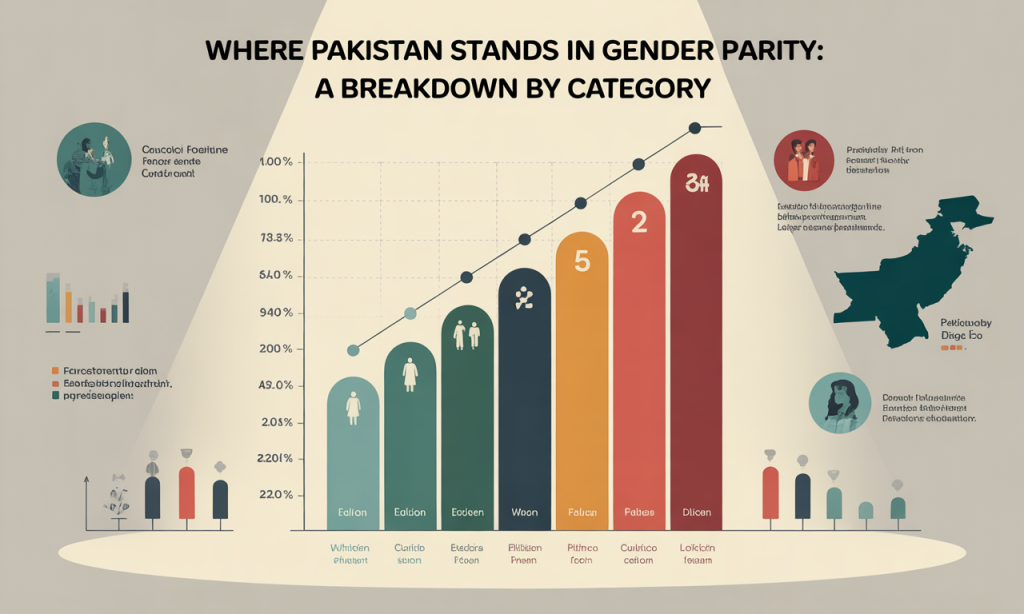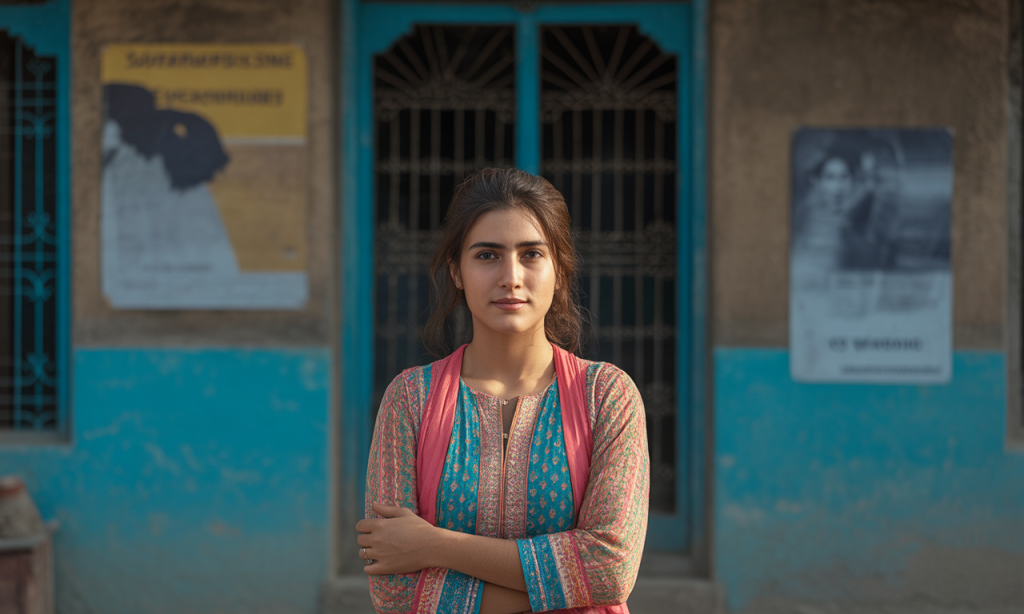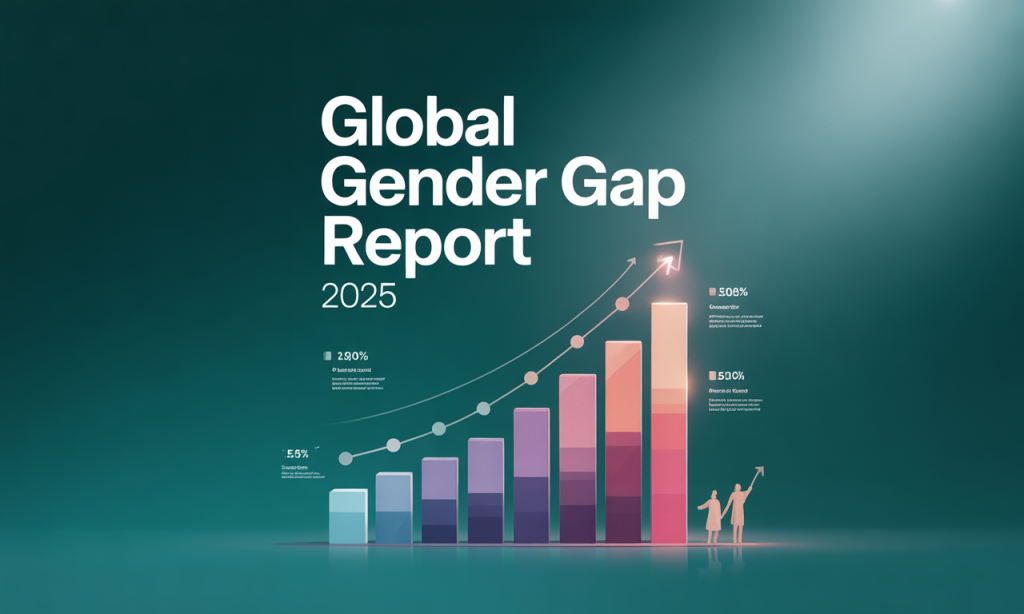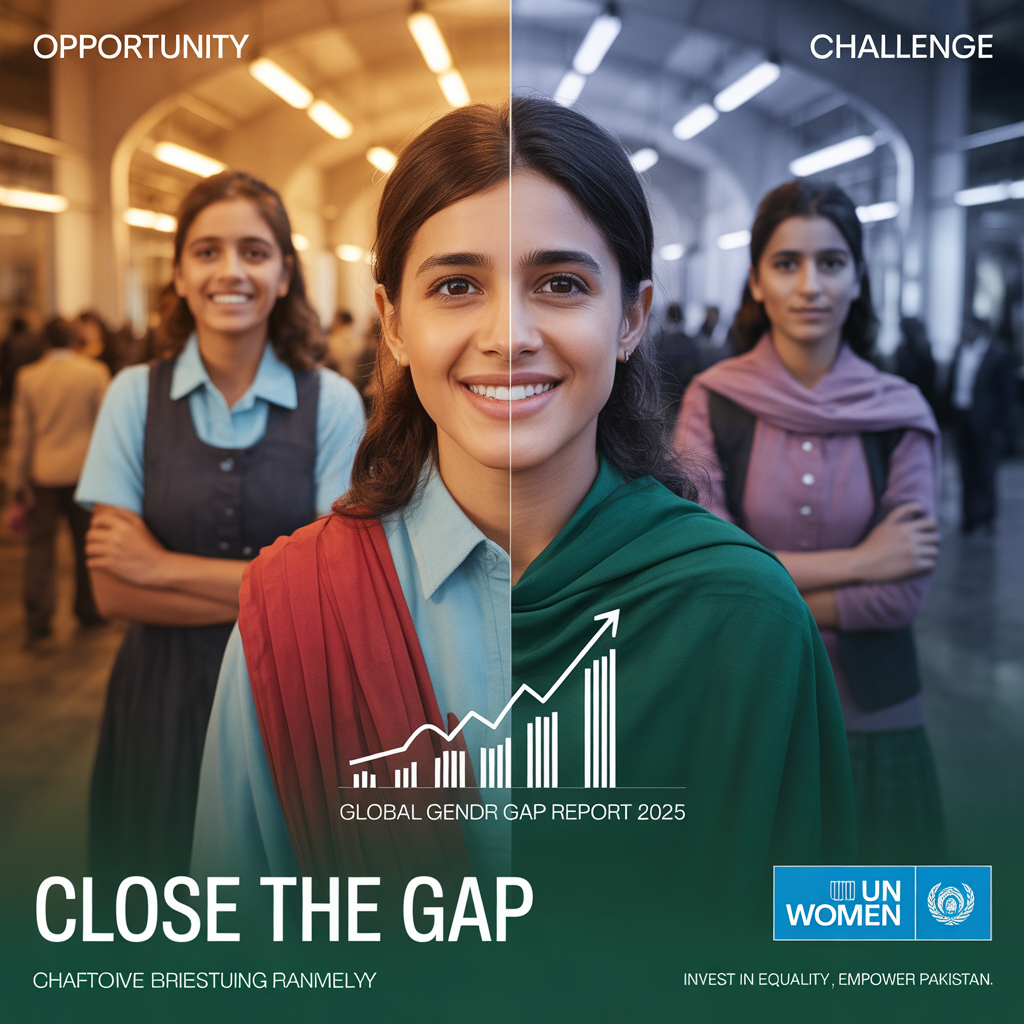Once again, Pakistan is at the bottom of the World Economic Forum’s Global Gender Gap Report 2025, placed 148th out of 146 countries on account of statistical ties. Recording a 56.7% gender parity score, the country still shows wide gender gaps in various domains such as economic participation, education, health, and political empowerment.
Although it pushed up globally, the world gender parity declined for Pakistan. In 2024, the country was 57%. This year, it fell by 0.3%, despite increased global awareness of gender inequality. So, what is Pakistan doing wrong, and what does this mean for the future of the country?
Understanding the Global Gender Gap Report
The Global Gender Gap Index The Global Gender Gap Index is an index designed to measure gender-based gaps among countries. The 144 countries in the report represent more than 93 percent of the world’s population, and it is the only global index of this kind. These pillar rankings collectively represent a cross-country measure of how equally each country’s society distributes resources and opportunities between the two genders. And by measuring progress and backsliding year after year, the report becomes both a diagnostic tool and a wake-up call, motivating governments, policy makers, and civil societies to take action based on fact, not prejudice, to secure women the rights and opportunities they deserve.
- Economic Participation and Opportunity
- Educational Attainment
- Health and Survival
- Political Empowerment
Each country gets a score from 0 (perfect inequality) to 1 (perfect equality). A score of 0.567, such as Pakistan’s, implies that just 56.7% of the gender gap has been closed, a long way behind the global average.
The highest-ranked countries in 2025 were Iceland, Finland, and Norway, with over 85%. South Asian states such as Bangladesh (99) and Nepal (117) did much better than Pakistan, showing regional disparities as well.
Where Pakistan Stands: A Breakdown by Category

Pakistan remains weak across all four gender gap mechanisms: economic, educational, health (Pakistan suffers from chronically high malnutrition rates and the country has among the world’s highest maternal mortality rates), and political. Deep-seated cultural biases, chronic systemic neglect, and lax policy implementation also make their weight felt, revealing an immediate need for structural reform and inclusive development plans.
1. Economic Participation and Opportunity
Pakistan is a country that has one of the most significant gender gaps in the world, economically speaking. Female participation in the labor force is about 22% compared with over 80% for men. The wage gap is as alarming as Pakistani women are paid only 18 cents for every dollar made by a man for similar work.
What fuels this disparity?
- Social norms that prioritize domestic roles for women
- Lack of workplace infrastructure (daycares, flexible hours)
- Safety and mobility concerns
- Discriminatory hiring practices
Unemployment is still disproportionately high among educated women. For example, over 50% of female graduates are unemployed due to structural and social obstacles.
2. Educational Attainment
In principle, Pakistan has come a long way in female education. Primary education has been on the rise for decades. But girls’ dropout rates are still dangerously high, especially in the countryside.
Even in 2025, Pakistan is yet to catch up with tertiary participation parity. Although boys and girls are much more likely to start school, many fewer girls finish high school or attend university. Key barriers include:
- Early marriages
- Economic pressure
- Menstrual health support in schools is absent
- Accessibility to schools, particularly in rural regions
While girls in urban areas like Lahore or Islamabad may have better educational resources, millions of rural girls are still out of school.
3. Health and Survival
This is the only dimension where Pakistan does relatively better, where the gender gap score is almost at par. But “relative” is a canard here.
Life expectancy disparities are narrowing; however, maternal mortality is still unacceptably high, especially in places where healthcare infrastructure is poor. Violence against women, lack of sufficient mental health assistance, and curbs on reproductive rights are still contributing to poor health results for women. A woman in Pakistan is substantially more likely to die in childbirth or to go without treatment for illnesses because they are systematically ignored.
4. Political Empowerment
The most shocking number in the report may be Pakistan’s political representation record.
- Women make up only 20.2% of Parliament, primarily through reserved seats.
- There are no women in key federal leadership roles such as President, Prime Minister, or Chief Ministers of provinces.
- Grassroots-level female political participation is negligible due to social backlash and security threats.
This is a reversal of the trend, even though they had elected the FIRST female Muslim head of government back in the 1980s. Representation today is tokenistic and rarely comes equipped with genuine power or policy influence.
Cultural and Structural Barriers: The Root Cause

Pakistan’s dismal showing on gender equality is not just the effect of economic deprivation, poor health infrastructure, or poor water management; it is the product of deeply entrenched cultural norms and structural inequalities that have become more rigid with the passage of generations. In private and public spaces, patriarchal norms prevail, where women are mainly perceived as caregivers and not as the workforce or leaders in governance. They’re ingrained in the family’s expectations, the school curriculum, the distortion of religion, and the workplace, forming a society in which the rights and roles of women are eroded every day. Reform without attending to these basic structural elements will be insufficient to narrow gender disparities.
- Women are expected to prioritize family roles over careers.
- In many regions, women require a male guardian’s permission for work, travel, or education.
- Workplace harassment, limited mobility, and religious misinterpretations further confine women’s agency.
The result? A cycle of gender exclusion that affects not only women but national development itself.
Why This Ranking Matters

You might ask: What does an international ranking do with the average citizen? The key to this magic is what it allows instead of what it unveils. For me, these are not numbers on a page; they represent the experiences, opportunities, and barriers that half the population encounters. A low score indicates systemic gender discrimination embedded in the laws and regulations of a country, impacting women’s access to everything from education and healthcare to decent wages and political representation. And international investors, donors, and development agencies also have their perceptions of countries shaped by global rankings. 7 Poor performance can result in less funding, lost partnerships, and damaged global reputation, which ultimately impact everyone’s quality of life.
- Loss of Human Capital: With over 49% of the population female, excluding women from the economy is not just unjust but also economically self-sabotaging. According to the IMF, gender parity in labor markets could increase Pakistan’s GDP by up to 30%.
- Education vs. Opportunity Gap: Educated women are not being absorbed into the workforce or public leadership. This mismatch leads to brain drain, frustration, and wasted potential.
- Global Image: International investors and development agencies assess countries through indices like these. Poor gender parity crisis can deter investment and impact foreign aid and partnerships.
- Intergenerational Impact: A child born to an empowered mother is twice as likely to be educated and healthy. Gender inequality today directly affects the next generation.
What Can Be Done: The Road to Reform
However, despite this bleakness, change is not just necessary but vital for the future of Pakistan. Narrowing gender disparities calls for a coordinated, multi-level approach that engages all levels of government, civil society, business, and individuals themselves. Changing mindsets, laws, and institutions will take time, but strategic, steady initiatives can begin to correct decades of imbalance. Here are some immediate, practicable measures that Pakistan should undertake to advance toward substantive gender equality:
1. Legal and Institutional Reform
- Implement and enforce laws on equal pay, anti-harassment, and workplace rights.
- Mandate gender quotas in Parliament, corporate boards, and local government.
2. Education and Vocational Training
- Provide free, accessible education for girls in rural and urban slums.
- Introduce STEM and skill-based programs that connect women to digital and remote work opportunities.
3. Safe Mobility and Infrastructure
- Create safe transport options for women to access schools and workplaces.
- Build daycare centers, maternity support, and gender-sensitive workplaces.
4. Political Empowerment
- Promote women leaders at the community level through mentorship and grassroots campaigns.
- Support women contesting general seats, not just reserved ones.
5. Cultural Change Through Media
- Use media, influencers, and entertainment to challenge stereotypes.
- Promote stories of empowered women breaking societal norms.
6. Male Allyship
- Encourage men and boys to be part of the solution through school-based awareness and leadership training.
More Than Just a Number
Where Pakistan sits in the Global Gender Gap Report 2025 isn’t just a number; it’s a reflection. A vote of systemic failures, cultural stasis, and lost opportunity. But it’s also a call to arms.
This is not about putting women versus men. It’s about creating a welcoming, just, and well-equipped society with the tools of unlocking and capitalizing on its most excellent resource, its people.
Until we get serious about gender parity crisis in our policies, classrooms, workplaces , and homes, we are going to continue to lag not just in rankings, but in actual progress.
There’s a long way to go, but it’s the way we must go. Equality is not a luxury; it is a right.
